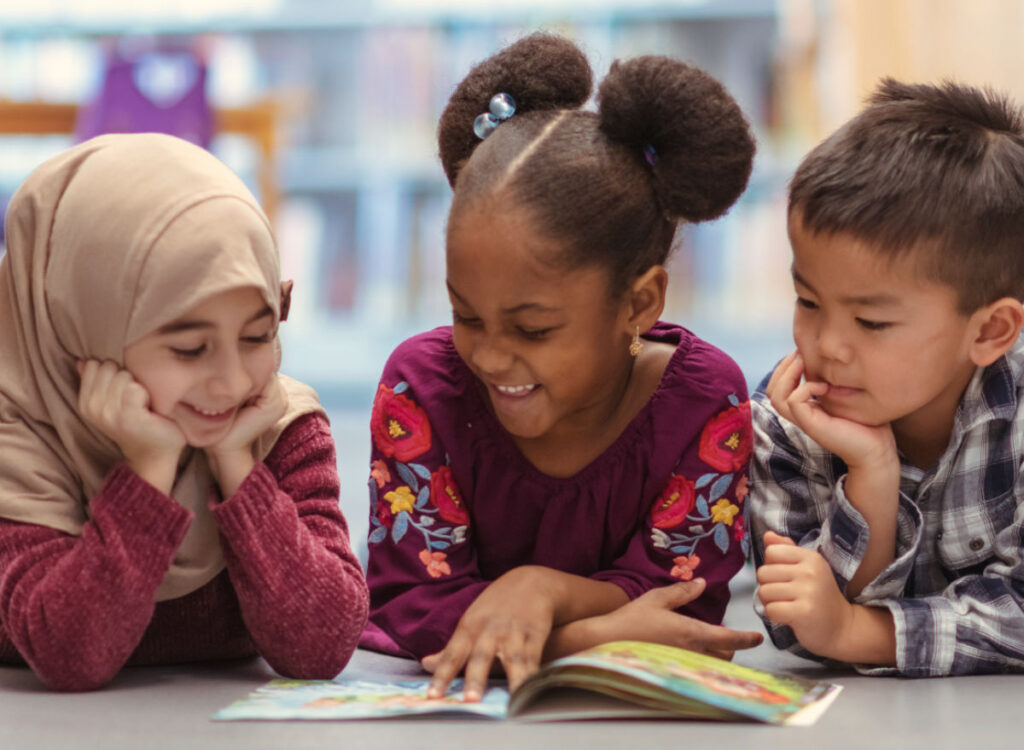 It doesn’t have to be this hard.
It doesn’t have to be this hard.
That’s the overriding sentiment of parent and educator Joanne Petrone, who penned an insightful article in praise of textbooks on Slate.
“When schools closed this spring, many parents, including me, felt overwhelmed and underwater trying to help our children participate in distance learning,” Petrone writes, echoing a familiar feeling most parents of school-aged kids understand.
“Every day seemed to usher in a new way for my husband and me to fail at reading emails, managing logins, printing worksheets, troubleshooting tech problems, photographing assignments, and keeping track of class Zooms,” she continues. “Being an educator as well as a parent gave my experience a particularly nightmarish quality, as if I were somehow both the driver and pedestrian in this collision. As a teacher, I participated in a flurry of trainings on using various apps to make videos, find e-books, host meetings, use data, and share student work, but as a parent, I could not keep up.”
The ability to stream remote education has been a critical part of this year, and school districts have spent massive amounts of budget dollars making sure the technology is in place … yet adding another app or tech solution to help parents cope isn’t the answer. Petrone believes there is one tool, however, that can definitely help.
“It’s not new, and it won’t disrupt education as we know it, but in a time of upheaval, steep learning curves, and decision fatigue, there’s a lot to be said for the familiar,” she insists. “As districts invest millions in distributing Chromebooks and helping families secure internet access—a necessity for keeping kids connected to their teachers and to school—they should also make plans to invest in and distribute another essential learning tool: the textbook.”
For 150 years it’s been a staple in our American classrooms … and for good reason. A book is an equal-access medium, requiring just enough light to read by to be useful. Petrone gives a fascinating rundown of the history of texts in the classroom, beginning with the McGuffey Readers our parents and grandparents were undoubtedly familiar with.
“At their core, textbooks are a way to distribute the essential content of a class to a massive group of students in a way that is standardized and economical,” she explains. “A good textbook is clear, appealing, and organized in a predictable way. It’s not just paragraphs of text, but it also includes extratextual features such as reference materials, answer keys, sidebars, and key terms to aid students in their comprehension.”
As technology began to consume more of our lives, textbooks in the classroom began to fall aside. Replacing them actually became more expensive than equipping every student with a Chromebook and buying the necessary licenses for online software. Even educational text bastion Pearson sold off its line of textbooks to focus on software, saying print texts are on their way out.
Yet how different would the day look for parents and kids now learning at home, with a print book by their side? No more fighting over screen time, troubleshooting video feeds, and in many cases no access at all to high-speed internet. No more constant distractions and temptations to veer away from the topic at hand, instead of focusing on the work at hand.
It’s no wonder parent groups are beginning to push back, even while the challenges of modernizing our kids’ printed texts are acknowledged.
“Textbooks are, of course, no silver bullet for the hardships brought on by school closure, and not all textbooks are high-quality. The politicized Texas state adoption process has produced history books that whitewash American history, for instance, while many science textbooks downplay the scientific consensus on the cause of climate change,” she notes.
“But there is also no guarantee that the digital products that replace textbooks will be an improvement, and schools do their students a disservice by not providing physical copies of books for students to refer to during a video lesson or work from with the computer off,” Petrone writes.
If trained educators are having this much of a challenge, it’s time to make some changes. It’s time to get some books back in those backpacks… even if they’re only carrying them from their bedroom to the kitchen table. Kids learn better on paper… no matter where that learning is taking place.

December 18, 2020, 9:54 am